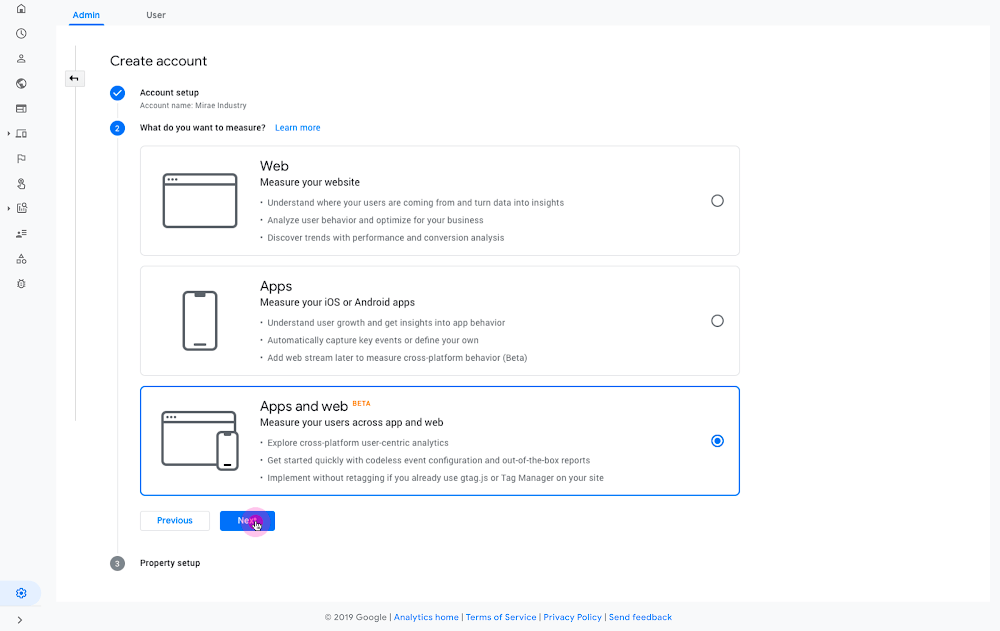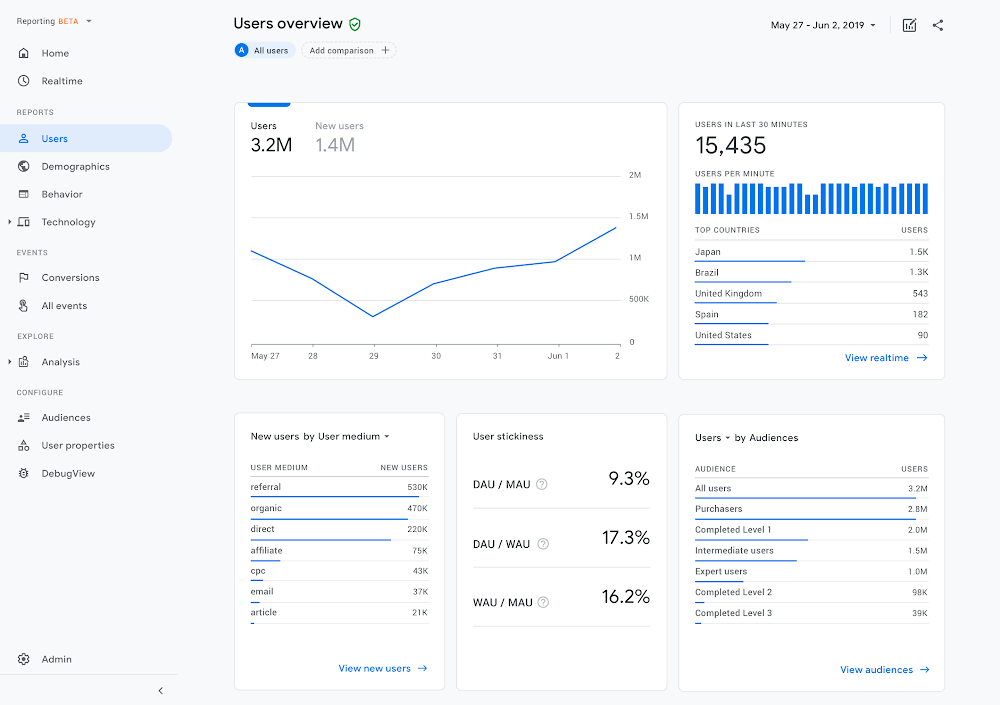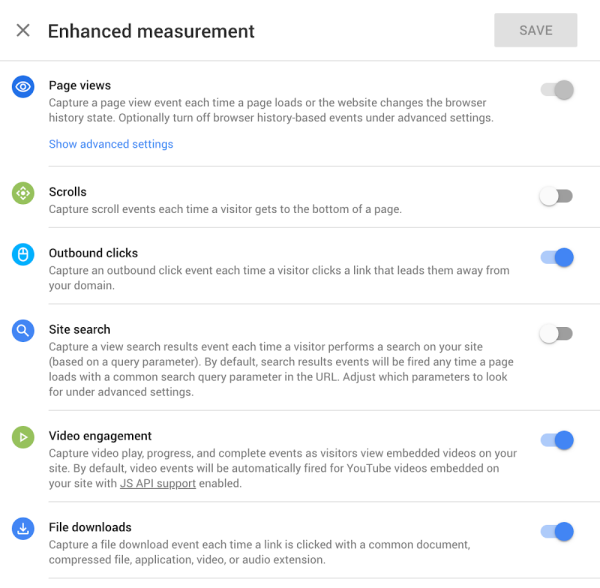Google Analytics 4 Update: How to get ready for the future of analytics
In October 2020, Google laid the foundation stone for the future of analytics with the launch of Google Analytics 4. Built to navigate challenges like understanding complex, multi-platform journeys of their customers, GA4 offered advanced capabilities like the new predictive insights, and the ability to track users across devices while providing greater granular user data controls.
Updated on Aug 30, 2022
While brands and marketers have been dragging their heels when it comes to adopting GA4 – in March this year, Google made another announcement in favour of GA4 – the sunsetting of Universal Analytics (GA3) — by July 1, 2023, and a one-time processing extension for Google Analytics 360 properties until October 1, 2023. This means in just over 15 months from now, migrating to GA4 will no longer be an option, so the more familiar marketers get with GA4’s interface and capabilities, the better equipped they’d be to handle the transition for their brands.
Sounds intimidating? Don’t worry, we’ve got you covered! This article will help you understand all the new capabilities of GA4 while sharing important tips and tricks to successfully migrate from universal analytics to GA4.
All you need to know about Google Analytics V4
Google Analytics 4 is a full-proof analytics solution for modern-day marketers to avoid leaving business-critical insights on the table. We’ve rounded up some key capabilities that are strikingly different from universal analytics and how they’d help.
- Unified cross-platform analytics
The most crucial difference between GA4 and its predecessor is the focus on combining both your mobile and web data for unified reporting and analysis. With this, marketers would no longer need to rely on Firebase integrations to monitor mobile and app data. They would be able to use a single set of consistent metrics and view integrated reporting across the app and web.


- Out-of-the-box flexible event tracking
While universal analytics uses the concept of Users, Pageviews and Sessions, GA4 uses the concept of Events – emphasizing firmly on the users and their interactions alone. With the ‘Enhanced Measurement’ feature, brands and marketers can track a diverse range of user interactions like clicks, page views, app opens, and more across different platforms in a consistent way by just flipping a toggle.

This new data tracking paradigm will unlock a host of benefits for marketers, including these:
-Enriching events with more data will become much easier with GA4. Events can be enriched with over 25 custom parameters to help brands build a deeper and more comprehensive understanding of the interaction.
-Creating custom reports will now be faster, and more accurate. While combining data scopes to create detailed reports yielded errors in Universal Analytics, a flexible data model and singular focus in GA4 makes generating custom reports rather straightforward.
-The new structure will also allow automatic tagging of events without any coding effort – simply by enabling a toggle.
- BigQuery Exports
GA4 allows you to easily export all your data directly to BigQuery, which was previously possible only with GA360. The BigQuery integration allows marketers to get their raw event data directly into a data warehouse, which opens up the ability to use predictive analytics, machine learning models and near-endless customization once they migrate to Google Analytics 4.
Why do you need to start the transition into Google Analytics 4 ASAP?
While brands could technically wait until next year to migrate to GA4, there are several reasons that marketers should get started now.
- When Universal Analytics sunsets next year in July 2023, brands would need to rely on GA4 for YoY analysis. And with the busiest months occurring mere weeks after the forced transition date marketers would need to have GA4 implemented, collecting data, and ideally validated through quality assurance as soon as possible – to have a year’s data in GA4 for easy analysis.
- One of the primary benefits of GA4 is the ability to leverage machine learning-powered insights to spot trends etc. This means the sooner brands set up GA4, the longer their analytics models will have to train.
- The difference between Universal Analytics and GA4 is significant – so anyone using GA4 will need time to learn the new vernacular, the new user interface (UI), and updated capabilities. So implementing GA4 now gives marketers a chance to explore the interface and transition their processes and reporting with the safety net of Universal Analytics still available.
The road ahead: Steps you need to take now to kickstart your GA4 migration
Chalking out the migration plan could be tricky and extremely daunting. But there are some critical steps we’ve rounded up for marketers to prioritize when they begin the GA4 transition:
- Kickstart stakeholder engagements: It’s important to identify project stakeholders from the technical/development teams and start conversations. This will give them time to assess the complexity of migration way in advance and plan the transition smoothly.
- Implement dual tagging: For every tag that currently exists in the GTM – Universal Analytics, set up a corresponding tag in GTM for GA4. And, replicate this process until all of the UA tags have parallel GA4 tags. By implementing this, marketers would
- be able to capture historical data in the GA4 property before they’re forced to migrate
- have a multi-year lookback window for their data
- not be stuck flipping between multiple properties to stitch together reports when UA property finally sunsets.
- Integrate Insider with your GA4 set-up: Event tracking is a building block of the new GA4 structure. And, to create valuable customer segments and simplify performance tracking, it is important to leverage campaign data/events(impressions and clicks). So, extend the scope of your migration plan to include Insider APIs and Objects. Leverage Google Tag Manager (GTM) Integration to send events to the new Google Analytics for Insider campaign events (e.g. impressions, clicks). Read the documentation here to learn more about how to configure your Insider-GA4 Integration.
Parting Thoughts
Change is never easy – but the secret lies in focusing all the energy in building the new. As marketers constantly work to keep up with the evolving customer behavior, trends – these algorithmic platform changes will be a force multiplier to build a holistic experience strategy. And, the GA4 updates are no different in that regard for the future of analytics.
With Insider by your side, you can rest assured that your conversion-focused marketing strategy is in good hands.



















